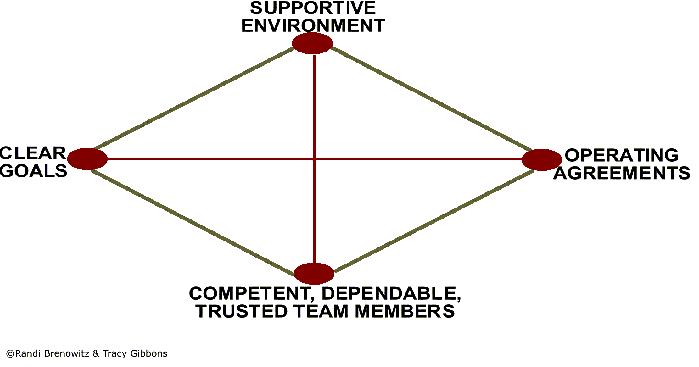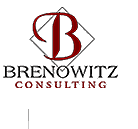Obliterating
Myths About Teams
by
Randi S. Brenowitz
This
article was featured in the May 19, 2003 issue of HR.com
Although the results generated by high-performing teams can seem
alluring, there is no magic in what is required to build a strong
team. It takes intense commitment and strong foundation work.
Whether the team's purpose is new service delivery, compensation
program reviews, policy development, curbing turnover or improving
performance, there are key areas to address or the team is likely
to fail. Just as architects use a blueprint to guide them through
a project, teams also need a model from which to work and guidelines
to keep them focused on fulfilling their goals and ultimate purpose.
Although team building can be hard work, companies cannot leave
a team's success to chance.
One
way to bolster success is to debunk the myths or popular beliefs
surrounding team building and teamwork. These beliefs are inaccurate
and contribute to the collapse of many teams. Using accurate methods
when constructing and supporting teams creates an environment
that allows teams to flourish. Here are some of the most common
myths:
Myth
#1: Teams are the panacea to all problems
Many corporate executives believe teams are the panacea for everything
wrong in their organizations. Teams do save organizations
money, increase productivity, streamline processes and contribute
to improved quality of services and goods. Yet, Robbins and Finley,
authors of, The New Why Teams Don't Work: What Goes Wrong and
How to Make It Right, state that "teams that are a mechanism
solely for saving money tend to wear out sooner, their juices
flow intermittently at best, and in their frustration, members
tear into one another." Teams cannot fix all the issues inside
an organization. Another common fallacy is that problem employees
can be "cured" by placing them on teams. Unfortunately,
this does not work. Even those who occasionally make sound contributions
still tend to cause problems for the organizations and the
teams on which they serve. Teams work best when their purpose
for existence is tied to a specific challenge, and they have the
appropriate membership and support.
Myth
#2: Mixing successful employees guarantees a successful team
Simply choosing the most capable people and putting them in a
room together does not guarantee that they will function as a
high-performing team. While the appeal of successful teams is
their combined intellect, experience, resourcefulness and problem
solving skills, this does not happen easily. Even the most well-intentioned
people will run into problems when the right foundation work is
not in place to support their efforts. Teams are most successful
in achieving their goals when they are equipped with the right
tools, guided by clear goals and a supportive environment and
made up of trustworthy, dependable members.
Myth
#3: Teams can produce results overnight
Organizations cannot create a team on Monday and expect results
by Friday. It takes time, nurturing and growing pains to produce
a successful team capable of generating outstanding results. Teams
need time to meet together to create genuine buy-in to the team
goals. Taking the necessary time to lay a firm foundation allows
a team the opportunity to become high performing. In other words,
go slow to go fast. "It takes time, it's not going to happen
overnight, and it needs constant reinforcement," says Elisabeth
Ekman, VP of Engineering for Zilog, builders of semi-conductors
located in Campbell, California. "We have been at this collaborative
team building effort for nearly two years, and now it's pretty
much running itself. But what's important is to stick to building
the team effort consistently." When organizations are patient
with their teams' efforts, the teams have a higher chance of fulfilling
or exceeding their mission.
Myth
#4: Any group of people is essentially a team
There is a tendency to use 'team' for labeling many different
group efforts. For example, a customer service department might
label its employees the "customer service team." Yet,
while these employees are doing something collectively, they may
never interact with each other, or have interdependent goals.
In other words, they are working colleagues, not team members.
In the book, Wisdom of Teams, Katzenbach and Smith define
a real team as "a small number of people with complementary
skills who are committed to a common purpose, performance goals
and approach for which they hold themselves mutually accountable."
Other
groups that are not necessarily teams include committees
and work groups. Work groups, unlike teams, have individual accountability
and work products. After a sufficient number of meetings and discussions,
the members of a work group decide and then delegate. In contrast,
teams have mutual accountability and collective work products.
They have open-ended, problem-solving deliberations before making
decisions and then decide how to accomplish their goals. While
teams may be more trouble initially, they are frequently worth
it as collectively, team members possess more experience, understanding,
and knowledge to solve challenges than any one individual.
The Team Essentials Model©

Using
a teambuilding model gives team members a blueprint for successfully
achieving the team's purpose. For example, the Team Essentials
Model© consists of four crucial elements that help team members
create a commitment to a common vision:



